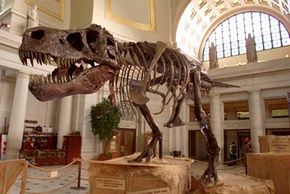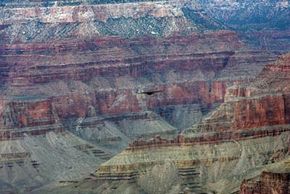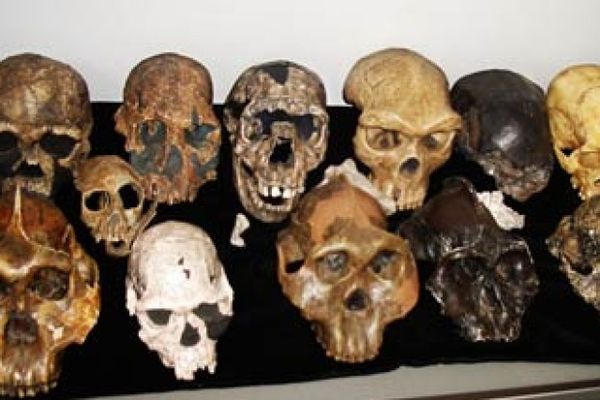When paleontologist Mary Schweitzer found soft tissue in a Tyrannosaurus rex fossil, her discovery raised an obvious question -- how the tissue could have survived so long? The bone was 68 million years old, and conventional wisdom about fossilization is that all soft tissue, from blood to brains, decomposes. Only hard parts, like bones and teeth, can become fossils. But for some people, the discovery raised a different question. How do scientists know the bones are really 68 million years old?
Today's knowledge of fossil ages comes primarily from radiometric dating, also known as radioactive dating. Radiometric dating relies on the properties of isotopes. These are chemical elements, like carbon or uranium, that are identical except for one key feature -- the number of neutrons in their nucleus.
Advertisement
Atoms may have an equal number of protons and neutrons. If, however, there are too many or too few neutrons, the atom is unstable, and it sheds particles until its nucleus reaches a stable state. Think of the nucleus as a pyramid of building blocks. If you try to add extra blocks to the sides pyramid, they may stay put for a while, but they'll eventually fall away. The same is true if you take a block away from one of the pyramid's sides, making the rest unstable. Eventually, some of the blocks can fall away, leaving a smaller, more stable structure.
The result is like a radioactive clock that ticks away as unstable isotopes decay into stable ones. You can't predict when a specific unstable atom, or parent, will decay into a stable atom, or daughter. But you can predict how long it will take a large group of atoms to decay. The element's half-life is the amount of time it takes for half the parent atoms in a sample to become daughters.
To read the time on this radioactive clock, scientists use a device called a mass spectrometer to measure the number of parent and daughter atoms. The ratio of parents to daughters can tell the researcher how old the specimen is. The more parent isotopes there are -- and the fewer daughter isotopes -- the younger the sample. The half-life of the isotope being measured determines how useful it is at dating very old samples. Once all the parents have become daughters, there's no more basis for comparison between the two isotopes. Scientists can't tell whether the clock ran down a few days or millions of years ago. This means that isotopes with a short half-life won't work to date dinosaur bones.
The short half-life is only part of the problem when dating dinosaur bones -- researchers also have to find enough of the parent and daughter atoms to measure. Read on to see what it takes to date a fossil and what volcanic ash has to do with it.
Advertisement



